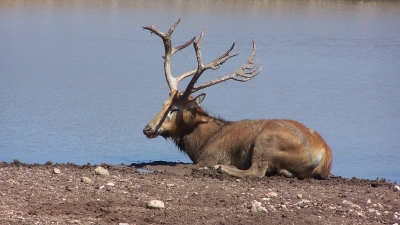
Populations in India
India is one of the few places in the world to spot the Swamp deer or barasingha in the wild Our country hosts three subspecies of the barasingha – the eastern, wetland and hard-ground barasingha They are found in three geographically distinct regions – while the eastern barasingha roams the Brahmaputra plain the wetland species spans the Indo-Gangetic plain, and the hand ground barasingha is found in central India. Among the most important places to spot them are the Kanha Tiger Reserve (hard-ground) in Maulija Pradesh and the Kaziranga National Park (eastern) in Assam in 2005, a population of over 300 wetland swamp deer was re-discovered at Jhilmil heel Conservation Reserve in Uttarakhand.
Threats
According to the International Union for Conservation of Nature (IUCN), it is likely that barasingha always had a patchy distribution, reflecting the available suitable habitat and so always had faced the threat of local extinction. But what has added to this problem is the conversion of its habitat to agricultural land. This has forced them into small and isolated fragments. When animals are grouped and isolated thus it increases the chance of disease transmission in-breeding and localised extinction. Another form of threat is hunting – they are killed for their meat and hide. It cannot be stressed enough how invasive species, loss of food and extreme weather events too threaten an already vulnerable species.
There’s good news!
While the IUCN has listed that the population of barnsingha has generally been seeing a decline, there’s some good news on this front from Madhya Pradesh. The number of hand ground swamp deer (Recensis duvauceli) found in Kanha has increased. According to reports in 2020, the number stands at 500 (it was nearly 450 in 2015), This is highly encouraging considering the species was close to extinction only a few decades ago. The increasing population said to be the is result of successful breeding programmes and conservation practices at Kanha. The methods included habitat improvement and captive breeding.
Barasingha facts
- Swamp deer or barasingha has been classified vunerable by the IUCN.
- The animals were spread from Pakistan and India to Nepal and Bangladesh in the 20th Century. Unfortunately, today they are found only in India and Nepal, and have gone extinct in Pakistan and Bangladesh. IUCN states that its presence is uncertain in Bhutan.
- While the hard-ground barasingha occupy sal forests and are grazers, the other two subspecies are adapted to swampy areas and feed also on aquatic plants.
- The three subspecies shed their antlers at different times during a year – the wetland species by mid-January, the hard-ground by late April, and the eastern by early October.
- Barasingha is the State animal of Madhya Pradesh. In 2017, Kanha became the first tiger reserve in India to officially introduce mascot (named Bhoorsingh), which was a barasingha.
Picture Credit : Google
